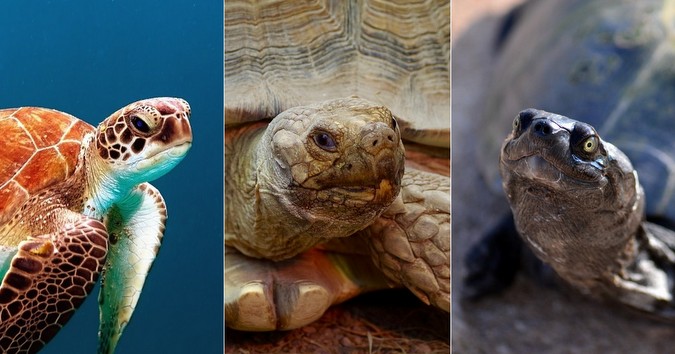
Turtles, tortoises and terrapins are reptiles with bony or cartilaginous shells. They belong to the taxonomic order of Testudines, or Chelonii – which comes from the Greek word ‘khelone’, meaning interlocking shields or armour. Interestingly, their shell – unlike claws, nails, horns and beaks – contains nerves, so they are quite receptive to feeling through their shells. For example, they can feel the pressure of weight on their shells and will experience pain if their shell is broken or cracked.
 Want to see tortoises, turtles or terrapins on an African safari? Check out our safari ideas here, or let our travel experts plan the perfect African safari for you by clicking here.
Want to see tortoises, turtles or terrapins on an African safari? Check out our safari ideas here, or let our travel experts plan the perfect African safari for you by clicking here.
They are typical reptiles: cold-blooded (ectothermic), have scales, breathe air, and lay eggs on land.
However, the terms used to describe these species can get a bit confusing, depending on the type of English used.

Turtle, tortoise, or terrapin? What’s in a name?
The distinction between a turtle, tortoise or terrapin comes from what habitat they are adapted to live in, though the terminology differs slightly in certain countries. Depending on where in the world you’re from, the term ‘turtle’ can be used to refer to all species under the order, whereas on the other hand, ‘turtle’ could also only apply to the water-dwelling/marine species.
In America, all chelonians that live in or near water are commonly referred to as turtles, whereas in countries where British English is used (such as in the United Kingdom and South Africa), the word turtle relates to species that live in marine environments. At the same time, terrapins are those that live in freshwater, and tortoises are land-dwelling species.
Of course, these are all just generalisations and, depending upon where you live, these terms may be interchanged or used in different ways. That being said, in general, there are a few commonly accepted distinctions between turtles, tortoises, and terrapins.

Turtles (marine)
Marine-based turtles spend most of their lives at sea, only returning to land to lay eggs. Their shells are flat and streamlined to help reduce drag while swimming. Unlike land-based tortoises who have short, sturdy legs, turtles have flipper-like limbs that help them to swim more efficiently – though this makes getting around on land far more difficult.
Turtles enjoy a varied omnivorous diet, and depending on the type of turtle, they may eat jellyfish, small invertebrates, sea sponges or sea vegetation such as seaweed or aquatic algae.
Turtles can grow to substantial sizes! The largest is the leatherback sea turtle (Dermochelys coriacea). It’s easily distinguished by the lack of a bony shell, which is replaced by a leathery carapace. Adult leatherbacks have an average length of 1-1.75 metres and can weigh anywhere between 250 to 700 kg.
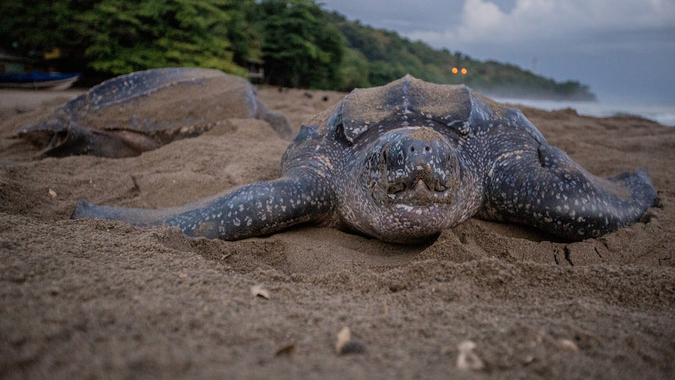

Tortoises (terrestrial)
Tortoises live exclusively on dry land and are usually found in hot, dry environments. Their shells are not streamlined like marine turtles but are instead shaped like a dome, and they have column-shaped feet with claws.
They are not good swimmers, but will occasionally enter bodies of water (such as at a waterhole or even a puddle) to clean themselves or drink water.

Even though they are known to eat a small amount of meat, tortoises are mainly herbivorous, primarily eating low-lying shrubs, cacti, grasses, weeds, fruit, and other forms of vegetation.
Like marine turtles, tortoises can grow quite big and can live for a very long time. The giant tortoises of the Galapagos and the Indian Ocean, along with the Aldabra tortoise from Seychelles, are the largest. They can weigh as much as 417 kg and can grow to be 1.3 metres in length.
The oldest known living tortoise (also regarded as the oldest living terrestrial animal in the world) is Jonathan – a Seychelles giant tortoise (Aldabrachelys gigantea hololissa) living on the island of St. Helena – who is due to turn 187 years old in 2019.
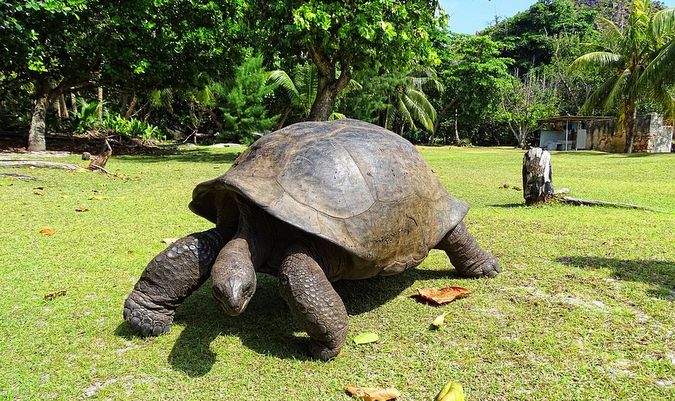
Terrapins (freshwater)
Terrapins are the semi-aquatic, freshwater-living versions of turtles. They live in either fresh or slightly salty (brackish) water, and you will find them by waterholes, ponds or lakes. They tend to swim quite often, but also spend their time on land, basking in the sun and occasionally burrowing in the mud. Their name comes from ‘torope’, a Native American Algonquian word meaning ‘a little turtle’.
Their hard shell is slightly streamlined yet also slightly domed (like tortoises). Even though they can swim, they don’t have flippers like a turtle, but rather legs similar to tortoises. You could say that they are like a mix between a turtle and tortoise.
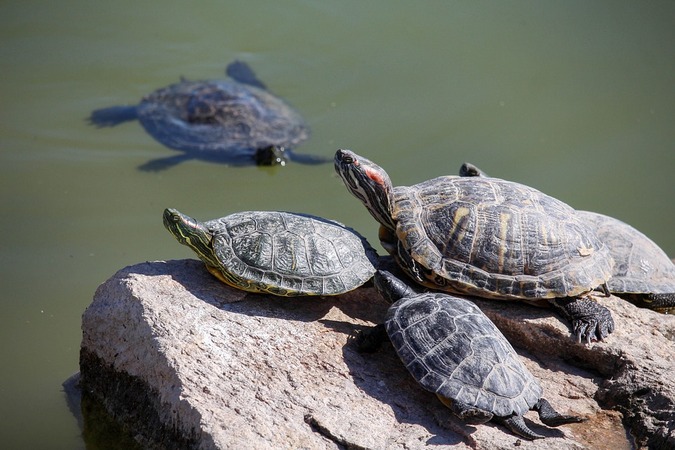
Terrapins are omnivorous, and their diet can consist of molluscs, small fish, crustaceans, insects, algae and other aquatic plants.
Unlike turtles and tortoises, terrapins remain relatively small. However, there are some giant species of terrapin out there, such as the snapping turtle (found in America, hence the use of the term ‘turtle’) which is capable of growing to over 60cm and weigh up to 80 kg.
Terrapins are aggressive and will bite. They have incredibly sharp claws and a powerful snapping jaw. Although they do not have teeth, they can easily take a finger off with a single chomp. They may also ‘bark’ when angry.
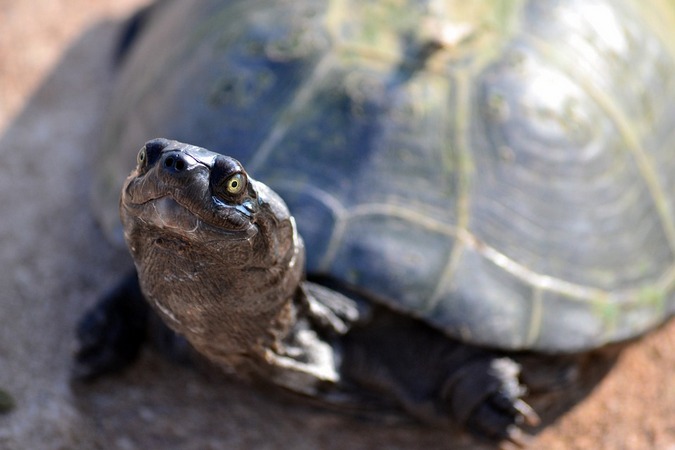

ADDITIONAL READING
• Turtles being ‘feminised’ by climate change, say scientists
• Why did the tortoise cross the road?
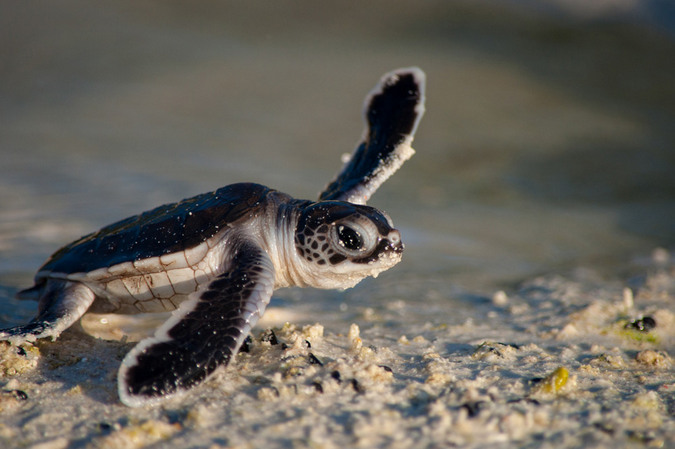
To comment on this story: Login (or sign up) to our app here - it's a troll-free safe place 🙂.![]()





